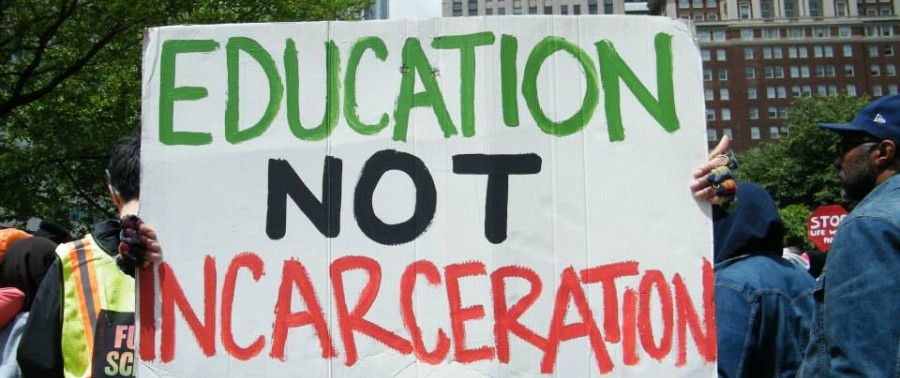My initial reaction when I began my research on this topic was one of surprise. I knew about the School-to-Prison Pipeline, and zero tolerance, but I could not have conceived of the extent to which zero tolerance has been taken. I could not have conceived of a five-year-old girl being handcuffed in school by a police officer for throwing a tantrum. I would never have imagined that kids could be suspended for breaking dress code. While I had read the numbers before, it was actually reading and listening to the individual stories of these youth that really moved me. That’s when you remember that they truly are just kids. So why are we treating them like criminals? With all of the data clearly demonstrating the negative consequences for students that accompany exclusionary discipline—including psychological harm, strained student/teacher relationships, increased likelihood for dropout or arrest, falling behind in school—and the complete dearth of data to support that these zero tolerance policies are actually helping anything at all, I can’t help but be puzzled, and reflect on what the true motivation is for expanding and upholding these policies? What is it that schools are truly intolerant of?
My reflections on this project occurred in the wake of the recent events surrounding the police murders of Michael Brown and Eric Garner. During this time of heightened consciousness of racial profiling and excessive police violence towards people of color, It has been impossible for me to not draw constant connections between what is happening in the schools, and what is happening on the outside.
An idea that became especially salient to me was that zero tolerance disciplinary practices are not just unfairly pushing minority kids out of schools and into the criminal and juvenile justice system at shockingly disproportionate rates—as if that wouldn’t have been bad enough. What I have been thinking about recently is how current school disciplinary practices are not only pushing kids out of school but they are also directly modeling a systemic form of oppression that goes far beyond school walls.
Zero tolerance discipline policies are preparing our nations youth—the future leaders of tomorrow—to become desensitized to the disproportionately harsh punishment of people of color. On the topic of zero tolerance, Wilson (2014) writes, “This notion had its roots as urban police were given carte blanche to make arrests for the smallest offenses” (p. 50). One of the biggest human rights issues facing our country right now is exactly this: police wielding what feels like carte blanche to punish people of color disproportionally for minor offenses. Unwarrented suspensions become unwarranted killing.
Through this project I have reflected on the fact that the culture of fear, and mistrust between people of color and law enforcement is starting in kindergarten classrooms—a fact that is deeply disturbing to me. From a young age, students are being criminalized, alienated, and made to feel unwanted and unsafe in their own school. Not only must these disciplinary practices perpetuate negative self-concepts and feelings of mistrust among students of color—I would think that they must also perpetuate prejudice and fear among white students, law enforcement, and educators. When children are going to school and consistently seeing their black peers getting arrested and expelled, they are absorbing a certain narrative. The image of a classmate in handcuffs, sends the message that that is a person to fear, someone who must be dangerous and must be restrained with excessive force.
Schools are silencing and disenfranchising students of color. It is not just the thousands of individual students who are pushed out of schools or incarcerated each year who are silenced. Students of color who remain in the schools are taught to stay quiet out of fear of facing disproportionately harsh consequences. By normalizing the excessive punishment and criminalization of youth of color, and teaching students of color to remain quiet and obedient for fear of outsized retribution, schools are preparing students of all races to perpetuate the status quo.
Under many expansive zero tolerance policies, students are automatically suspended for ‘willful defiance.’ It is willful defiance that is needed however, to stand up to the many oppressive policies and forms of racial injustice plaguing our country. This is where the importance of grassroots movements comes in. Where schools are criminalizing youth defiance, grassroots organizations are harnessing that defiance, and encouraging students to find and strengthen their voices. Grassroots organizations are giving youth the tools and spaces to ‘talk back’ to unjust, oppressive policies, without fear of retribution. I was very impressed to learn that grassroots organizing around the school-to-prison pipeline is largely focused on youth organizing, and on giving youth of color the confidence and agency to advocate for themselves. Something that I have come to realize is that these grassroots efforts to empower the youth are of critical importance because it is the oppressed youth of today—who have experienced theses injustices firsthand—who have the potential to be the most effective advocates for change of tomorrow. I have also learned that grassroots organizations, even those led by youth, can affect extraordinary change. Learning about these grassroots movements and their courage, persistence, and successes, has given me hope in a time of sadness and frustration about racial inequality. It has been a very cool experience to be studying these grassroots movements, while simultaneously watching a youth movement to fight racial injustice grow and gain momentum in my own school community. In thinking about youth-led grassroots organizations—when you see the level of commitment that these kids are putting in to bettering their communities, it really makes you take pause at the idea that these are the very children our schools are pushing out.
